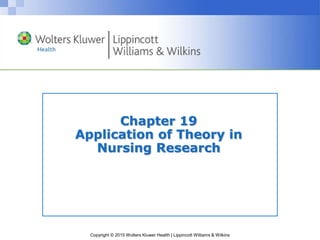The document discusses the relationship between theory and research in nursing. It states that research should be placed within a theoretical framework to guide the research process and aid in interpretation of findings. Nursing research has historically lagged due to a limited theoretical base and lack of efforts to link theory and data. The document outlines different types of theories (descriptive, explanatory, predictive) and corresponding research methods (descriptive, correlational, experimental). It also discusses how theory can be used in the research process through theory generation, theory testing, and as a conceptual framework.








































